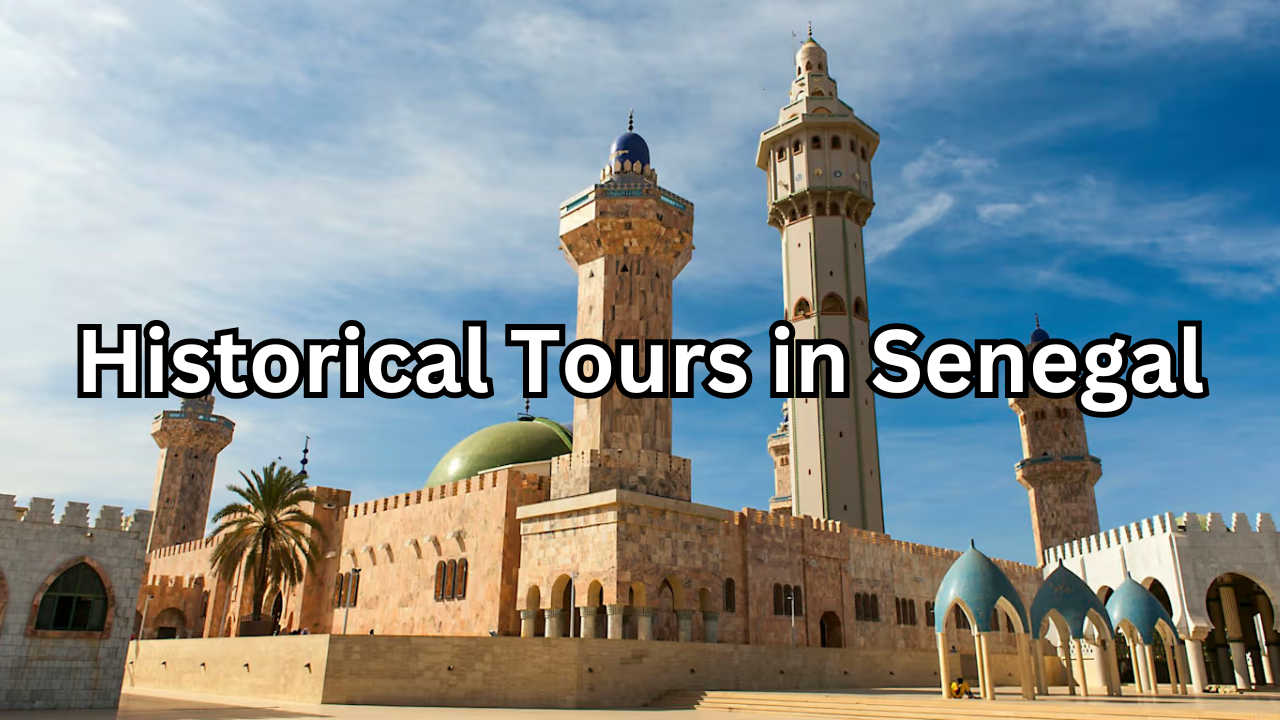Table of Contents
Introduction
Exploring Historical Tours in Senegal offers a captivating journey through a nation steeped in diverse cultural influences and rich historical narratives. Nestled in West Africa, Senegal’s landscapes and cities bear witness to centuries of civilization, trade, colonialism, and independence struggles, making it a compelling destination for history enthusiasts.
From bustling urban centers like Dakar to serene riverbanks and ancient archaeological sites, each tour unveils layers of Senegal’s past, providing deep insights into its cultural evolution and resilience. These tours not only showcase architectural marvels and UNESCO World Heritage sites but also immerse travelers in the traditions, languages, and customs of Senegal’s vibrant ethnic groups.
By delving into Senegal’s historical tours, visitors embark on a transformative experience, gaining a profound understanding of how past events have shaped the country’s identity and continue to influence its present-day dynamics. Whether tracing the footsteps of ancient civilizations, exploring colonial legacies, or witnessing the natural wonders that have shaped Senegal’s history, these tours promise to ignite curiosity, inspire reflection, and foster a deeper appreciation for this dynamic West African nation.
Importance of Exploring Historical Tours in Senegal
Exploring Senegal’s rich historical heritage is not merely a journey through time but a profound exploration of humanity’s shared past. Senegal, with its diverse cultural influences and pivotal historical events, offers invaluable insights into the interconnectedness of civilizations and the resilience of its people. By delving into Senegal’s historical sites and narratives, travelers can:
- Understand Global Contexts: Historical Tours in Senegal intersects with major global events such as the Atlantic slave trade, colonialism, and the struggle for independence. Exploring these narratives provides a deeper understanding of broader historical currents and their lasting impacts.
- Appreciate Cultural Diversity: Senegal’s history is shaped by a mosaic of cultures, including Wolof, Fulani, Serer, and Diola among others. Each group has contributed distinct traditions, languages, art forms, and belief systems, creating a rich tapestry of cultural diversity.
- Preserve Heritage: Historical tours contribute to the preservation and interpretation of Senegal’s tangible and intangible heritage. Sites like Goree Island and colonial forts serve as reminders of past injustices and the resilience of communities that have shaped Senegal’s contemporary identity.
- Promote Cultural Exchange: By engaging with local historians, artists, and communities, visitors foster cultural exchange and mutual understanding. These interactions promote dialogue and appreciation for Senegal’s cultural contributions to the global community.
Overview of the Diverse Cultural Influences Shaping Historical Tours in Senegal
Senegal’s history is a testament to the confluence of diverse cultural influences that have shaped its identity over millennia. Key influences include:
- Indigenous Civilizations: Ancient civilizations such as the Ghana Empire and the Kingdom of Tekrur flourished in Senegal, leaving behind archaeological sites that provide glimpses into early African societies.
- Islamic Influence: Senegal’s history is deeply intertwined with Islam, which spread across the region from the 11th century onwards. Islamic architecture, traditions, and religious practices have profoundly influenced Senegalese culture.
- European Colonization: Beginning with Portuguese explorers in the 15th century and followed by French and Dutch colonial rule, Senegal’s coastal regions became pivotal points in the transatlantic slave trade and later, in European imperial ambitions.
- Cultural Fusion: The interaction between indigenous African, Arab-Berber, and European cultures has resulted in a unique Senegalese cultural synthesis. This fusion is evident in Senegal’s music, cuisine, language, and religious practices.
By understanding these diverse cultural influences, travelers gain a deeper appreciation for Senegal’s complex and resilient history, reflecting its enduring ability to synthesize and evolve amidst global and local forces.
Goree Island Tour
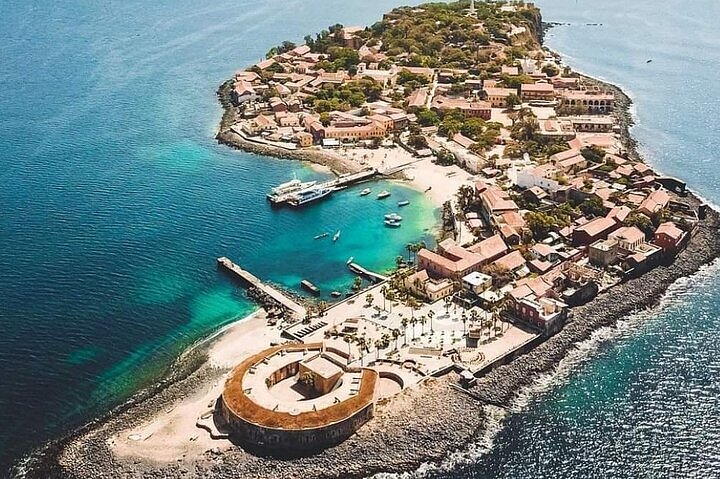
Goree Island stands as a poignant reminder of Senegal’s role in one of history’s darkest chapters—the Atlantic slave trade. This UNESCO World Heritage site, located just off the coast of Dakar, holds significant historical and cultural importance, drawing visitors from around the world to reflect on humanity’s collective past.
Visit to Goree Island, a UNESCO World Heritage Site
Goree Island, known locally as Île de Gorée, invites travelers to step back in time amidst its cobblestone streets, colonial architecture, and tranquil beaches. The island’s picturesque setting contrasts with its haunting history, making it a powerful educational destination.
Exploration of the House of Slaves Museum
Central to any visit is the House of Slaves museum, a solemn memorial to the millions of Africans forcibly taken from their homes and shipped across the Atlantic Ocean. This museum preserves the memory of those who endured unimaginable suffering, with its cramped cells and “Door of No Return” symbolizing the departure point for enslaved Africans bound for the Americas.
Reflection on the Atlantic Slave Trade and Its Impact
The Goree Island tour prompts deep reflection on the Atlantic slave trade’s profound impact on Senegal, Africa, and the world. It serves as a catalyst for understanding the historical roots of systemic racism, economic exploitation, and cultural displacement that continue to reverberate today. Visitors are encouraged to contemplate the resilience of the human spirit amidst adversity and to honor the legacies of those who fought for freedom and justice.
By immersing oneself in Goree Island’s history, travelers embark on a transformative journey of remembrance and enlightenment, gaining a deeper appreciation for Senegal’s enduring quest for reconciliation, social justice, and global solidarity.
Dakar City Tour
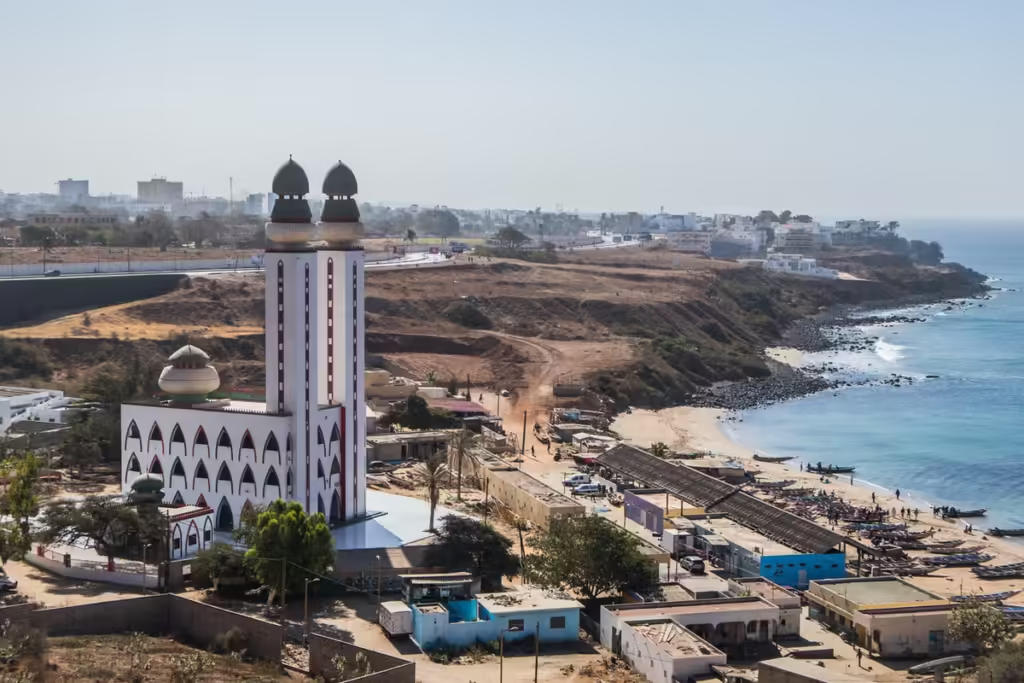
Embark on a Dakar City tour to uncover the dynamic blend of colonial heritage, vibrant culture, and pivotal historical landmarks that shape Senegal’s bustling capital.
Exploration of Dakar’s Colonial Architecture
Begin your journey by marveling at Dakar’s colonial architecture, which reflects its history as a strategic port city under French rule. Wander through neighborhoods adorned with elegant facades, bougainvillea-clad balconies, and ornate balconies that harken back to a bygone era.
Visit to Independence Square and Presidential Palace
Continue your exploration with a visit to Independence Square, a symbolic hub where Senegal declared its independence from French colonial rule on April 4, 1960. Feel the pulse of national pride as you stand in the heart of the city’s civic life.
Nearby, the Presidential Palace stands as a testament to Senegal’s modern governance and political stability. Admire its grandeur and learn about the country’s democratic evolution since gaining independence.
Insights into Senegal’s Struggle for Independence
Gain insights into Senegal’s arduous path to independence, shaped by leaders like Leopold Sedar Senghor and the Pan-African movement. Discover how the nation navigated challenges and embraced its cultural heritage to forge a unified identity.
As you traverse Dakar’s streets, engage with local guides and residents to uncover personal stories and historical anecdotes that offer a deeper understanding of Senegal’s journey towards sovereignty and self-determination.
Conclusion
A Dakar City tour promises a captivating exploration of Historical Tours in Senegal and cultural tapestry, revealing the resilience, creativity, and enduring spirit that define this vibrant West African nation.
Saint-Louis Heritage Tour
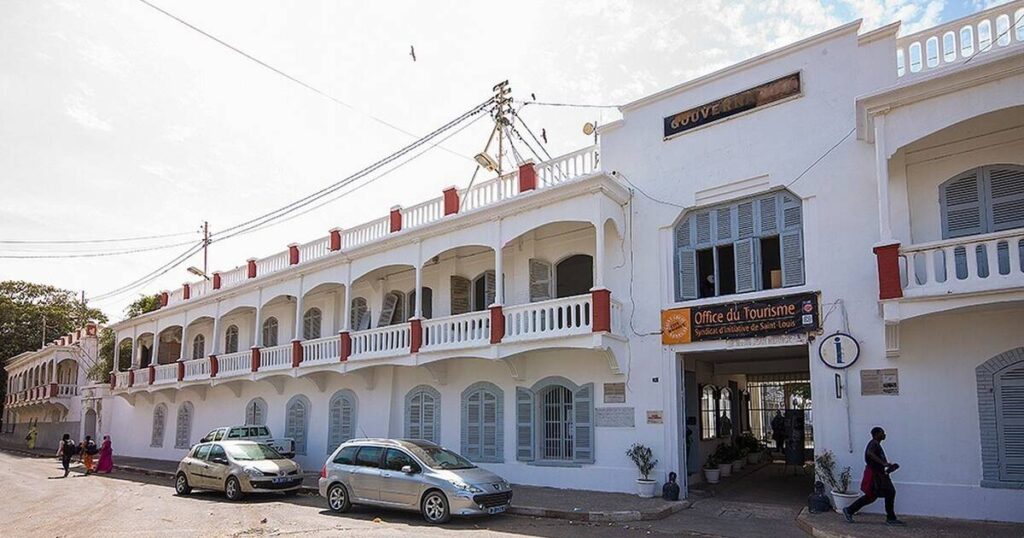
Embark on a Saint-Louis Heritage Tour to discover the charm and historical significance of Senegal’s former colonial capital, nestled along the banks of the Senegal River.
Journey to Saint-Louis, Senegal’s Former Colonial Capital
Begin your journey with a scenic drive or boat ride to Saint-Louis, a UNESCO World Heritage site renowned for its colonial architecture, vibrant culture, and strategic location.
Exploration of French Colonial Architecture and Faidherbe Bridge
Explore the streets of Saint-Louis adorned with elegant colonial buildings that reflect its French colonial past. Admire the blend of European and local architectural styles, characterized by verandas, balconies, and colorful facades.
A highlight of your tour is the Faidherbe Bridge, an iconic structure spanning the Senegal River. Named after Louis Faidherbe, the bridge connects the island of Saint-Louis with the mainland and stands as a testament to the city’s historical importance as a trading hub and administrative center.
Understanding the City’s Cultural Diversity and Historical Significance
Delve into Saint-Louis’ rich cultural diversity, shaped by the convergence of various ethnic groups such as the Wolof, Fulani, Serer, and Tuareg peoples. Experience the city’s vibrant markets, lively music, and traditional crafts that highlight its cultural vibrancy and resilience.
Gain insights into Saint-Louis’ pivotal role in Senegal’s history, from its establishment as a French colonial outpost in the 17th century to its prominence as a center of trade, education, and cultural exchange. Learn about the city’s contributions to Senegal’s intellectual and artistic heritage, including its influence on literature, music, and cuisine.
Conclusion
A Saint-Louis Heritage Tour offers a captivating journey through Senegal’s colonial past, cultural diversity, and architectural splendor. By exploring this historic city, travelers gain a deeper appreciation for Senegal’s complex history and its enduring cultural legacy.
Saloum Delta Excursion
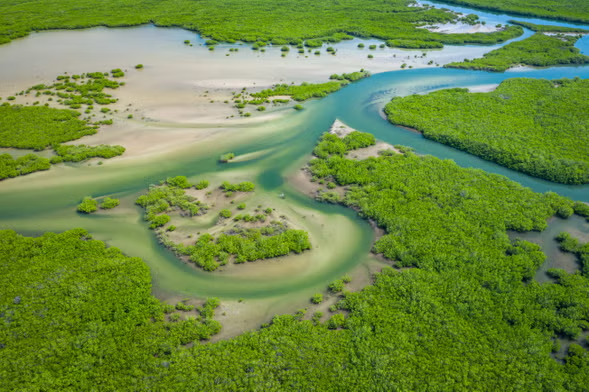
Embark on a Saloum Delta Excursion to immerse yourself in the pristine natural landscapes, ancient history, and vibrant culture of one of Senegal’s most ecologically and culturally significant regions.
Experience the Natural Beauty of the Saloum Delta
Begin your journey by exploring the breathtaking natural beauty of the Saloum Delta, a UNESCO World Heritage site renowned for its biodiversity and stunning scenery. Cruise along serene waterways flanked by mangrove forests, tidal channels, and sandy islands that teem with birdlife and marine species.
Visit Toubacouta and Its Ancient Archaeological Sites
Discover the historic village of Toubacouta, nestled within the Saloum Delta, where ancient archaeological sites reveal traces of early civilizations dating back centuries. Explore remnants of ancient settlements, burial mounds, and artifacts that offer insights into the region’s rich historical and cultural heritage.
Insight into Local Traditions and Ecological Importance
Engage with local communities to learn about their traditions, customs, and way of life intricately tied to the delta’s natural rhythms. Discover traditional fishing techniques, artisanal crafts, and vibrant ceremonies that reflect the cultural diversity of the Serer, Fulani, and other ethnic groups residing in the region.
Gain a deeper understanding of the Saloum Delta’s ecological importance as a critical habitat for migratory birds, endangered species like the manatee, and a breeding ground for fish and crustaceans that sustain local livelihoods. Learn about ongoing conservation efforts aimed at preserving this fragile ecosystem and promoting sustainable tourism practices.
Conclusion
A Saloum Delta Excursion offers a transformative journey through Senegal’s natural and cultural landscapes, providing a profound appreciation for its biodiversity, historical richness, and the resilience of its people. By exploring this UNESCO World Heritage site, travelers contribute to the preservation of Senegal’s natural heritage and support sustainable development in the region
Thies and Its Historical Sites
Explore Thies, a city in western Senegal known for its colonial architecture, cultural vibrancy, and historical significance, through a journey that unveils its unique blend of past and present.
Exploration of Thies’ Colonial Architecture and Grand Mosque
Begin your exploration by marveling at Thies’ colonial architecture, which reflects its history as a pivotal administrative center during the French colonial era. Admire the elegant facades, ornate balconies, and historical buildings that line the city’s streets, offering a glimpse into its colonial past.
Visit the Grand Mosque of Thies, a prominent religious landmark that exemplifies Senegal’s Islamic heritage. Explore its architectural details, learn about its cultural importance to the local community, and witness the blend of Islamic and local architectural styles.
Understanding Thies’ Role in Senegal’s History and Culture
Delve into Thies’ rich history and cultural contributions, shaped by its strategic location and diverse ethnic composition. Learn about its role as a center of trade, education, and artistic expression, influencing Senegal’s intellectual and artistic heritage.
Discover the cultural diversity of Thies through its vibrant markets, traditional music, and local festivals that celebrate the traditions of the Wolof, Serer, and other ethnic groups. Engage with local artisans to appreciate their craftsmanship in textiles, pottery, and other traditional arts that reflect Thies’ cultural resilience.
Gain insights into Thies’ contemporary relevance as a hub for education, industry, and cultural exchange, fostering innovation and preserving its historical legacy amidst modern developments.
Conclusion
A journey through Thies offers a captivating exploration of Senegal’s colonial past, cultural diversity, and vibrant heritage. By immersing yourself in Thies’ historical sites and cultural traditions, you gain a deeper appreciation for its role in shaping Senegal’s dynamic identity and its ongoing contributions to the nation’s cultural tapestry.
Senegal River Journey
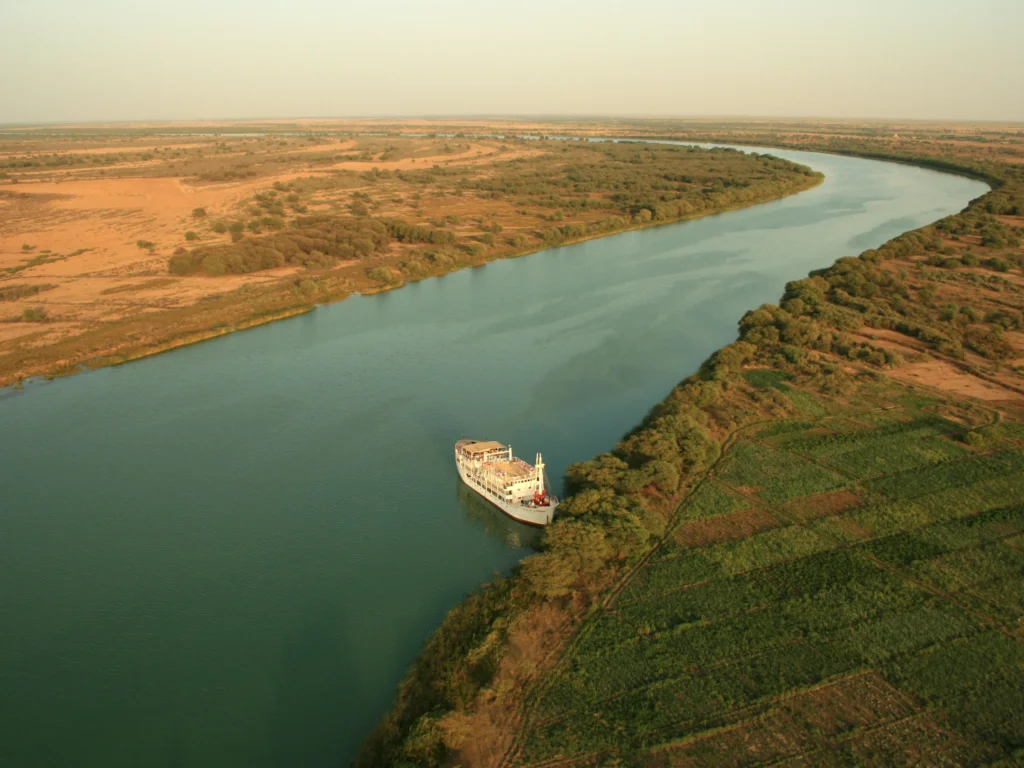
Embark on a Senegal River Journey to experience the natural beauty, cultural richness, and historical significance of one of West Africa’s most important waterways.
Cruise Along the Senegal River and Visit Riverside Villages
Begin your journey by cruising along the majestic Senegal River, which stretches across several countries and serves as a lifeline for communities along its banks. Marvel at the serene landscapes of lush greenery, wildlife habitats, and traditional villages that dot the river’s course.
Visit riverside villages inhabited by diverse ethnic groups such as the Fulani, Wolof, and Serer, among others. Immerse yourself in the daily rhythms of rural life, interact with local residents, and gain insights into their customs, traditions, and cultural practices passed down through generations.
Learn About Traditional Fishing Methods and Local Customs
Engage with local fishermen to learn about traditional fishing techniques passed down through centuries. Discover the importance of fishing to the local economy and livelihoods, and witness firsthand how communities sustainably harvest fish from the river.
Participate in cultural exchanges with villagers, who may share their music, dance, and culinary traditions. Experience the warmth of Senegalese hospitality as you share meals and stories with your hosts, deepening your appreciation for their way of life.
Insight into the River’s Historical and Economic Significance
Gain a deeper understanding of the Senegal River’s historical importance as a key trade route dating back to ancient times. Learn about its role in connecting West African civilizations, facilitating trade in gold, salt, and other commodities that shaped regional economies and cultures.
Explore how the river has influenced settlement patterns, agriculture, and cultural exchanges between different ethnic groups. Understand its modern-day significance in hydroelectric power generation, irrigation for agriculture, and transportation for local communities and industries.
Conclusion
A Senegal River Journey offers a transformative exploration of Senegal’s natural landscapes, cultural diversity, and historical legacy. By cruising along this iconic waterway and engaging with riverside communities, travelers gain a profound appreciation for the river’s role in shaping Senegal’s past, present, and future.
Djoudj National Bird Sanctuary
Explore Djoudj National Bird Sanctuary, a UNESCO World Heritage site nestled within the Senegal River delta, renowned for its biodiversity and vital ecological role.
Visit Djoudj National Bird Sanctuary, a UNESCO World Heritage Site
Embark on a journey to Djoudj National Bird Sanctuary, located in the Senegal River delta near Saint-Louis. This sanctuary spans over 16,000 hectares of wetlands and is a critical habitat for millions of migratory birds, making it a paradise for birdwatchers and nature enthusiasts.
Discovery of Diverse Bird Species and Their Migrations
Witness the breathtaking spectacle of diverse bird species that flock to Djoudj during their annual migrations. From pink flamingos and pelicans to herons, cormorants, and ducks, the sanctuary hosts over 400 species of birds, many of which travel thousands of kilometers from Europe and Asia to winter in its warm waters.
Understanding the Sanctuary’s Ecological Importance
Gain insight into Djoudj’s ecological significance as a Ramsar Wetland of International Importance and a UNESCO World Heritage site. Learn about the sanctuary’s role in preserving biodiversity, supporting fish populations, and providing nesting grounds for endangered species such as the purple heron and the great egret.
Explore the interconnectedness of wetlands, river ecosystems, and seasonal flooding that sustain Djoudj’s rich biodiversity. Understand the sanctuary’s contribution to local livelihoods through sustainable fishing practices and ecotourism initiatives that promote conservation and environmental education.
Conclusion
A visit to Djoudj National Bird Sanctuary offers a mesmerizing immersion into Senegal’s natural wonders and environmental conservation efforts. By exploring this sanctuary, travelers contribute to the preservation of global biodiversity and gain a deeper appreciation for the delicate balance between human activities and the protection of natural habitats.
Casamance Cultural Tour
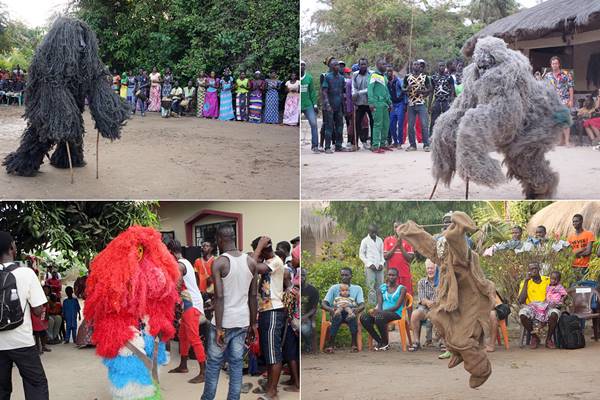
Embark on a Casamance Cultural Tour to uncover the vibrant traditions, rich cultural heritage, and natural beauty of this southern region of Senegal.
Journey to Casamance and Exploration of Its Cultural Heritage
Begin your journey with a scenic drive or flight to Casamance, a lush and fertile region known for its distinct cultural identity and tranquil landscapes. Explore the charming villages, verdant forests, and pristine beaches that characterize this unique part of Senegal.
Visit Traditional Villages and Experience Diola Traditions
Immerse yourself in the traditional way of life in Casamance by visiting rural villages inhabited predominantly by the Diola people. Engage with local communities to learn about their ancient customs, agricultural practices, and spiritual beliefs that are deeply rooted in the region’s history and environment.
Participate in rituals and ceremonies that showcase the Diola’s rich cultural heritage, such as the Bwiti initiation rites or the Kumpo mask dance, which are integral to their social and religious life. Discover the craftsmanship of local artisans, who produce intricate wood carvings, woven textiles, and pottery that reflect Casamance’s artistic traditions.
Enjoy Local Music, Dance, and Craftsmanship
Experience the rhythmic beats and melodious tunes of Casamance’s traditional music, characterized by the use of drums, kora (a West African harp-lute), and vocal harmonies that animate community gatherings and celebrations. Join in lively dance performances that convey stories of triumph, love, and unity within the community.
Admire the skill and creativity of local craftsmen and women as they demonstrate age-old techniques in basket weaving, batik printing, and jewelry making. Purchase handmade souvenirs to support local artisans and take home a piece of Casamance’s vibrant cultural legacy.
Conclusion
A Casamance Cultural Tour offers a profound exploration of Senegal’s southern region, where cultural traditions, natural beauty, and community spirit converge. By engaging with the Diola people and participating in their customs and artistic expressions, travelers gain a deeper appreciation for Casamance’s cultural richness and contribute to sustainable tourism practices that support local livelihoods and preserve cultural heritage
Senegal’s Colonial Forts
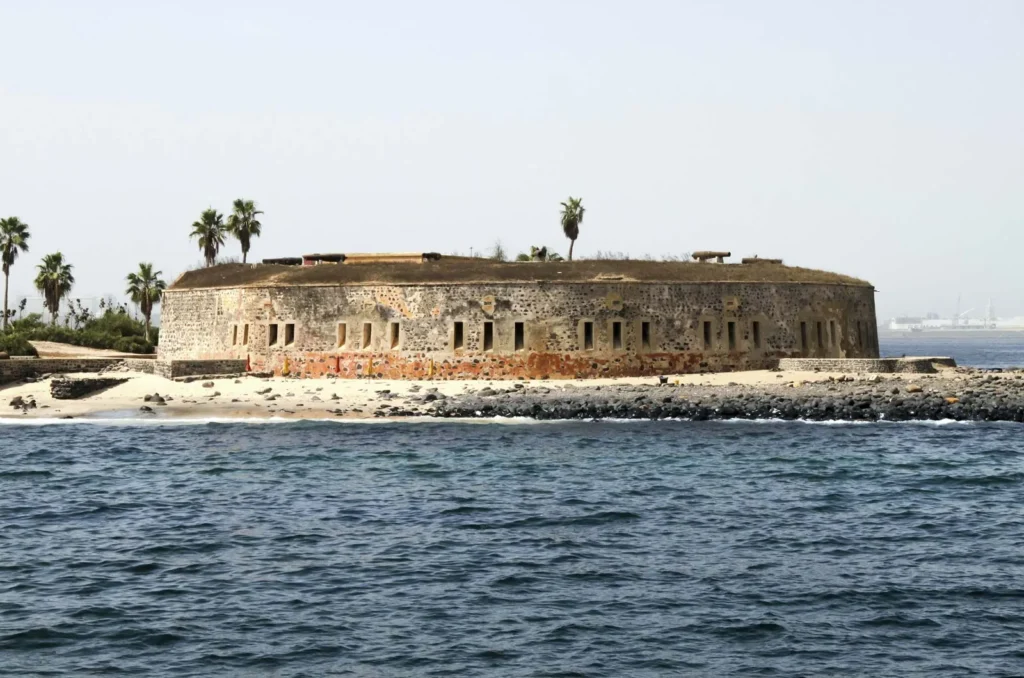
Explore Senegal’s colonial forts along its picturesque coastline, each telling a story of trade, defense, and the complex relationship between Europe and West Africa during the colonial era.
Tour Colonial Forts Along Senegal’s Coast, Such as Fort d’Estrees
Embark on a historical journey to visit colonial forts scattered along Senegal’s coast, including Fort d’Estrees and others. These forts, built by European powers such as France and Portugal, served as strategic strongholds to protect trading interests and maintain control over valuable coastal territories.
Understanding Their Historical Role in Trade and Defense
Gain insight into the forts’ historical significance as pivotal points in the transatlantic slave trade and global commerce routes. Learn about their role in safeguarding European trading posts and facilitating the exchange of goods, including gold, ivory, and enslaved Africans, which shaped the economic fortunes of colonial powers.
Explore the architectural features and defensive structures of the forts, designed to withstand attacks from rival European nations and local resistance movements. Discover how these fortified structures symbolized European dominance and military prowess in West Africa during the 17th to 20th centuries.
Appreciation of European-Senegalese Relations
Reflect on the complex dynamics of European-Senegalese relations that unfolded within and around these forts. Consider the cultural exchanges, conflicts, and collaborations that shaped mutual perceptions and influenced Senegal’s cultural landscape.
Engage with local historians to understand the lasting impacts of colonialism on Senegal’s social, economic, and political structures. Consider the legacies of resistance and resilience among Senegalese communities who navigated colonial rule and eventually contributed to the nation’s quest for independence and sovereignty.
Conclusion
A tour of Senegal’s colonial forts offers a thought-provoking exploration of history, power dynamics, and cultural exchange in West Africa. By examining these historical sites, travelers gain a deeper understanding of Senegal’s colonial past, its enduring impacts, and the resilience of its people in shaping the nation’s contemporary identity.
IFAN Museum of African Arts
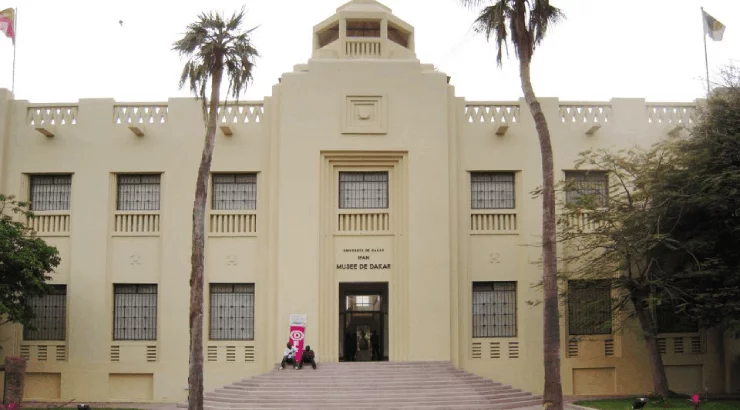
Discover the cultural treasures housed within the IFAN Museum of African Arts in Dakar, Senegal, where ancient artifacts, masks, and sculptures reveal the rich artistic traditions and cultural diversity of the African continent.
Visit the IFAN Museum in Dakar
Embark on a journey to the IFAN Museum, located in Dakar’s historic district. Founded in 1936, IFAN (Institut Fondamental d’Afrique Noire) is one of Africa’s oldest museums dedicated to preserving and showcasing African art and culture.
Explore Its Collection of African Artifacts, Masks, and Sculptures
Step into the museum’s galleries to admire a diverse collection of African artifacts, including ceremonial masks, statues, textiles, and pottery. Marvel at the craftsmanship and artistic expression that span centuries and reflect the cultural diversity of Senegal and neighboring regions.
Insight into Traditional Art Forms and Cultural Significance
Gain insight into traditional African art forms and their cultural significance through guided tours and interactive exhibits. Learn about the spiritual, social, and ritualistic meanings behind masks and sculptures, which serve as vessels of ancestral wisdom and community identity.
Explore how art forms from different regions of Africa depict themes of life, death, fertility, and power, providing a window into the beliefs and values of diverse African societies. Appreciate the continuity of artistic traditions and their evolution over time, influenced by encounters with other cultures and global dynamics.
Conclusion
In conclusion, exploring Senegal’s rich historical heritage through its diverse tours and cultural sites provides a profound journey into the heart of West Africa’s past and present. From the poignant reminders of the Atlantic slave trade on Goree Island to the architectural splendor of Dakar and Saint-Louis, each destination offers unique insights into Senegal’s complex history and cultural evolution.
Visiting natural wonders like the Saloum Delta and Djoudj National Bird Sanctuary not only showcases Senegal’s ecological diversity but also highlights the country’s commitment to conservation and sustainable tourism. Cultural tours in regions like Casamance and Thies provide opportunities to engage with local traditions, music, and craftsmanship, fostering a deeper appreciation for Senegal’s vibrant cultural mosaic.
Moreover, exploring Senegal’s colonial forts and museums such as the IFAN Museum of African Arts offers reflections on the impacts of European colonization and the resilience of Senegalese identity. These experiences underscore the importance of preserving cultural heritage and fostering cross-cultural understanding in our global community.
Ultimately, a journey through Senegal’s historical tours is not just about exploring the past; it’s about connecting with the enduring spirit of its people, celebrating their contributions to the world, and envisioning a future where cultural diversity and heritage are cherished and protected for generations to come.
